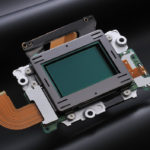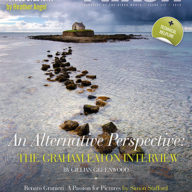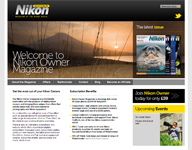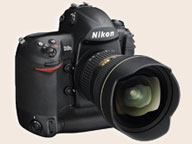Simon Stafford takes a first look at the D600, the latest FX-format Nikon D-SLR (All pictures courtesy of the Nikon Corporation)
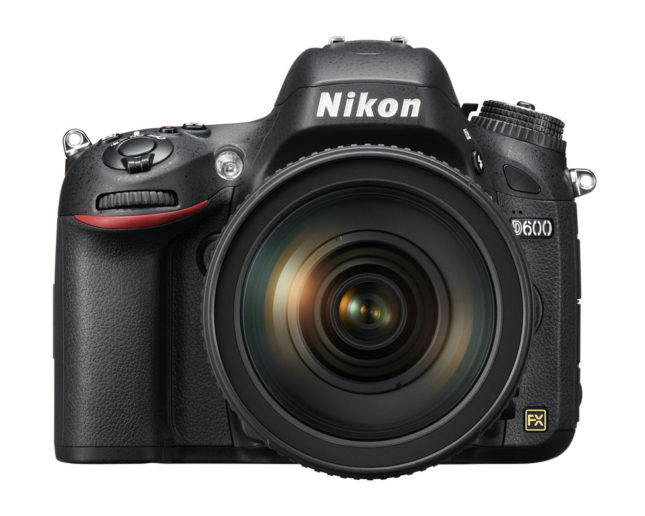
Following the introduction of the D4, D800 and D800E earlier this year, Nikon has today revealed its fourth FX-format (full-frame) D-SLR, the D600, to be introduced during 2012.
While the D4 and D800 models are aimed squarely at the professional sector of the market, the D600 has been designed to appeal principally to the dedicated enthusiast who requires an FX-format sensor in a lightweight and compact camera body. The D600 features a 24.3-million (effective) pixel Nikon FX-format (39.5 x 24 mm) CMOS sensor, providing a maximum resolution of 6,016 x 4,016 pixels, or put another way at a file resolution of 300 ppi (pixel per inch) the camera can produce a 20 x 13.3 inch (50 x 33 cm) print, essentially A3+ size, without any interpolation.
The new camera offers everything from fully automated point and shoot photography to complete manual control, with the usual compliment of exposure modes (aperture and shutter priority, programmed-auto, and manual), Auto, Flash cancelled, and nineteen dedicated Scene modes (exactly the same range as available on the D7000). The D600 has inherited a number of features and functions directly from the D4 and D800, including the Expeed 3 processing engine, extended AF sensitivity that works with a lens/teleconverter combination that has a maximum aperture of f/8, an HDR function and creation of time lapse video, together with a full range of settings and controls for HD video recording, while other innovations introduced with the D7000 have also been incorporated in the new camera, such as the U1 and U2 User Settings options that enable the camera to save two specific configurations of settings. The D600 also uses the existing Nikon EN-EL15, the same as the D7000 camera; however, there is a new optional battery pack, the MB-D14. As you would expect the D600 and its built-n Nikon Speedlight are fully compatible with the Nikon Creative Lighting System and external Nikon Speedlight flash units, including the latest SB-910.
Prior to today’s official announcement I had the opportunity to spend a little time taking a close look at the camera and discussing its finer points with Nikon (UK) staff. The following is a summary of the key features and functions of the D600, together with my first “hands on” impressions of the camera; the full technical specifications are available from the Nikon Corporation
Sensor
The D600 features a new FX-format (24.0 x 35.9 mm) CMOS sensor developed by Nikon, with 24.3 million effective pixels (twice the number on the sensor of the D700 and D3/D3s models), and has a pixel pitch of 5.49-microns. It provides image dimensions of 6,016 x 4,016 pixels at full resolution, with options for 4,512 x 3,008 pixels at the medium setting, and 3,008 x 2,008 pixels at the small setting. In the DX crop mode the camera has a resolution of 10.3 million pixels (3,936 x 2,624 pixels), compared with the 16.2 million pixel (4,928 x 3,264) full resolution of the DX-format Nikon D7000.
The camera offers a normal ISO range of 100 to 6,400, adjustable in 1/3EV, 1/2EV, or 1.0EV steps, plus an extended range of Lo 1 (ISO 50 equivalent) in 1/3EV steps, up to Hi-1 (ISO 12,800) in 1/3EV steps, and up to Hi-2 (ISO 25,600) in 1EV step.
Supporting the new sensor is Nikon’s third-generation image processing regime, EXPEED 3, which has been taken directly from the D4 and D800 models. It handles 14-bit analogue-to-digital conversion, followed by 16-bit image processing. Data processing is significantly faster than the EXPEED 2 processing of previous Nikon D-SLR cameras, with enhanced noise reduction algorithms that produce cleaner stills and video files, even at high ISO settings. Image files can be saved in the proprietary Nikon NEF (Raw) in 12, or 14-bit, as either lossless compressed, or compressed (there is no option to save uncompressed raw files), as well as in the JPEG format.
Shutter
The D600 features a newly designed shutter mechanism, with Kevlar/carbon fibre composite blades, which has been tested to 150,000 cycles (down from 200,000 cycles for the D800/D800E). The unit has a shutter speed range of 1/4000 to 30-seconds, with flash sync at 1/200-second; shutter release lag is 52-milliseconds. It has a reduced power drain during Live View and video recording, when the mirror is raised for protracted periods. When shooting stills pictures from Live View, with the camera set to its Live View (Photography) mode, the D600 keeps the reflex mirror in its raised position, so when the shutter release is pressed the only movement is the operation of the shutter, just as with the D4 and D800 models.
The camera has a full range of shutter release modes, including single-shot, continuous, self-timer, Quiet-shutter, remote-release, and mirror lock-up. The shutter can cycle at up to 5.5 fps (frames per second) in either the FX format, or cropped DX format, with full AF and auto-exposure operation. The optional MB-D14 Battery Pack can be added to facilitate vertical shooting, as it has an integrated shutter release button, a duplicate pair of command dials and a multi selector button, plus an AE-L/AF-L button.
Card slots
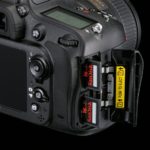 The D600 has two Secure Digital (SD) memory card slots, which are compatible with Secure Digital Extended Capacity (SDXC) and UHS-1 standards. Apparently the decision to use two SD slots and forego a CompactFlash card slot was based on the lack of available space inside the camera, due to one of the principle design criteria being to make the camera body as small as practicably possible.
The D600 has two Secure Digital (SD) memory card slots, which are compatible with Secure Digital Extended Capacity (SDXC) and UHS-1 standards. Apparently the decision to use two SD slots and forego a CompactFlash card slot was based on the lack of available space inside the camera, due to one of the principle design criteria being to make the camera body as small as practicably possible.
The secondary card slot can be assigned to perform a number of functions, such as acting as overflow storage from the card in slot 1, backup of image recorded to the card in slot 1, separate storage of NEF Raw and JPEG files when recording in both formats simultaneously, or recording stills to one card and video to the other.
Metering
The D600 incorporates a 2,016-pixel RGB sensor for its 3D Color Matrix metering III system (this is probably exactly the same component as used in the D7000). The metering system is fully integrated with the AF and auto-exposure systems, in what Nikon called their Advanced Scene Recognition System. Unlike metering sensors used by other manufacturers that group pixels into segments, the metering sensor of the D600 uses each pixel as an individual sampling point, which not only improves scene analysis for increased exposure accuracy but also improves the abilities of the AF system, in particular it subject tracking capabilities, even with subjects that are small within the frame area. This high level of sampling of the scene also enables the D600 to recognise human faces within the frame and report their location to the AF system, when it is set to Auto-area AF, plus optimise exposure accordingly, even in difficult lighting conditions.
Autofocus System
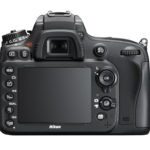 The Multi-CAM 4800 FX AF module used in the D600 has been engineered to provide excellent low-light AF performance down to -1EV and, in conjunction with the enhanced Scene Recognition System, improves AF response speed and subject tracking capabilities. The AF system has a total of 39 AF points, with the central cluster of 9 being cross-type sensors sensitive to detail in horizontal and vertical orientations. The user can select a single AF point or configure 9-, 21-, or all 39 AF points, with full AF operation possible with any AF Nikkor lens that has a maximum aperture of f/5.6, or wider. The enhanced sensitivity of the AF system, enables it to support AF operation down to a maximum lens aperture of f/8; however, the number of useable AF points is reduced, for example, an AF-Nikkor 600mm f/4 lens combined with a TC-20E III teleconverter, which has a maximum effective aperture of f/8, restricts AF to just seven AF points, of which only the central AF point acts as a cross-type sensor. If the maximum aperture is between f/5.6 and f/8, for example, an AF-Nikkor 500mm f/4 lens combined with the TC-17E II teleconverter (maximum effective aperture f/6.7) only thirty-three AF points support AF operation (the two sets of three AF points farthest left and right of the central AF point are excluded), with nine of those AF points acting as cross-type sensors. Other AF points can be selected but there is no guarantee that auto focus will function properly.
The Multi-CAM 4800 FX AF module used in the D600 has been engineered to provide excellent low-light AF performance down to -1EV and, in conjunction with the enhanced Scene Recognition System, improves AF response speed and subject tracking capabilities. The AF system has a total of 39 AF points, with the central cluster of 9 being cross-type sensors sensitive to detail in horizontal and vertical orientations. The user can select a single AF point or configure 9-, 21-, or all 39 AF points, with full AF operation possible with any AF Nikkor lens that has a maximum aperture of f/5.6, or wider. The enhanced sensitivity of the AF system, enables it to support AF operation down to a maximum lens aperture of f/8; however, the number of useable AF points is reduced, for example, an AF-Nikkor 600mm f/4 lens combined with a TC-20E III teleconverter, which has a maximum effective aperture of f/8, restricts AF to just seven AF points, of which only the central AF point acts as a cross-type sensor. If the maximum aperture is between f/5.6 and f/8, for example, an AF-Nikkor 500mm f/4 lens combined with the TC-17E II teleconverter (maximum effective aperture f/6.7) only thirty-three AF points support AF operation (the two sets of three AF points farthest left and right of the central AF point are excluded), with nine of those AF points acting as cross-type sensors. Other AF points can be selected but there is no guarantee that auto focus will function properly.
AF mode and AF-area mode selection has been simplified by adopting the same arrangement of a single switch with integrated button on the front of the camera, so it operates in the same way as the D4, D800/D800E, and D7000. At default settings pressing the central button of the AF switch and rotating the rear command dial will select the AF mode, while turning the front command dial will select the AF-area mode, which enables the user to keep their eye to the viewfinder and change AF configuration at will. The range of available AF modes for stills photography, using a phase-detection AF system, is the familiar line-up of: AF-S (single-servo), AF-C (continuous-servo, and AF-A (auto-servo). The AF-area modes for stills are likewise the well-established options of: Single-point, Dynamic-area, 3D-tracking, and Auto-area. The options for AF mode and AF-area modes used for the contrast-detection AF system when shooting pictures or video in Live View are the same as the D7000.
Video
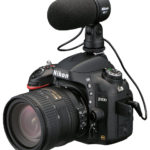 Video is now an accepted feature of any D-SLR as the convergence of technologies in the capture of stills and moving images has become increasingly important in D-SLR cameras. In the D600 Nikon has mirrored its implementation of video in the D800, with two crop options, FX and DX, both at an aspect ratio of 16:9.
Video is now an accepted feature of any D-SLR as the convergence of technologies in the capture of stills and moving images has become increasingly important in D-SLR cameras. In the D600 Nikon has mirrored its implementation of video in the D800, with two crop options, FX and DX, both at an aspect ratio of 16:9.
The D600 offers full HD (1920 x 1080p) resolution with selectable frame rates of 30/25/24, plus HD (1280 x 720p) at 25 fps, and slow motion at 60, or 50 fps at 720p. The D600 employs H.264 / MPEG-4 AVC compression with B-frame compression, which can use both previous and forward frames for data reference to get the highest amount of data compression. The maximum duration of a video clip is almost 30-minutes (approx 29.59 mins).
Other improvements include the ability to index mark specific frames in the timeline during a recording to assist in subsequent editing, remote control of video start/stop via the remote accessory terminal using the Nikon MC-DC2 remote release cable, or via a computer connection, as the D600 supports Nikon camera Control Pro2 application, plus a live frame grab of a still image when recording video.
The video capabilities of the D600 offer further flexibility, since it is possible to output an uncompressed video feed at the designated image size and frame rate, which is clean of the information overlay that can be displayed simultaneously on the camera’s rear monitor screen, to an external recorder, or monitor via the HDMI port. Dual output is possible when recording video, so it is possible to check video on an external monitor screen using the camera’s HDMI interface, in addition to using the rear monitor screen of the D600. Finally, in addition to the intervalometer feature of the D600 for recording time-lapse photography, it will also encode the individual images to produce a time-lapse video direct from the camera. The user sets the interval between exposures, duration of the recording period, the output resolution, plus the frame rate of the video to be created, which can set from 24 times to 36,000 times faster than normal. Once the shooting sequence has begun the D600 assembles the time-lapse video as each frame is recorded to reduce processing time. The only downside to this in-camera process comes from the camera not retaining the original still pictures, so it is not possible to use them as a source to create another time-lapse video subsequently. To produce a time-lapse video in post-processing you can use the camera’s intervalometer feature.
Audio has not been over looked, as in addition to the built-in monaural microphone, there is an external stereo microphone port, with the camera providing 20 distinct recording levels, plus an auto option. The D600 provides a visual monitoring of the audio recording level, which is supplemented by a headphone out port with 30 selectable volume levels.
Camera handling
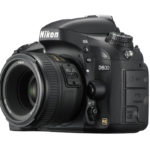 The D600 is constructed around a rugged, lightweight body shell that has the top and rear panels made from a magnesium alloy, while the rest is constructed from polycarbonate material. It is sealed against the ingress of moisture and dust to the same level as the D800. In the hand the camera feels robust, with a very high build quality. All the controls fall comfortably to hand when holding the camera for a horizontal picture, and almost so when shooting vertically with out the additional MB-D14 battery pack/grip.
The D600 is constructed around a rugged, lightweight body shell that has the top and rear panels made from a magnesium alloy, while the rest is constructed from polycarbonate material. It is sealed against the ingress of moisture and dust to the same level as the D800. In the hand the camera feels robust, with a very high build quality. All the controls fall comfortably to hand when holding the camera for a horizontal picture, and almost so when shooting vertically with out the additional MB-D14 battery pack/grip.
The overall size of the D600 at 141 x 113 x 82 mm / 5.5 x 4.4 x 3.2 inch, is almost exactly the same as the D700 at 147 x 123 x 77 mm / 5.8 x 4.8 x 3.0 inch (W X H X D), while profile of the two models is also broadly similar; however, there is a significant difference in weight, with the D600 tipping the scales at just 760 g (1 lb 10 oz) compared with the D700 at 995 g (2 lb 3 oz), body only without battery, or memory cards.
The optical viewfinder provides approximately 100% frame coverage for an unobstructed view in stills shooting when using the FX format, while on the rear of the camera the 921,000-dot LCD monitor screen is 8 cm (3.2 inch) across its diagonal (same size as the D4 and D800 models). To the right side of the screen is an ambient light sensor that is used to adjust the brightness of the screen automatically, if required, to improve the use of Live View in both bright and low-light conditions. The screen has a wide viewing angle and its clarity has been enhanced by bonding the screen panel to the inside surface of its protective glass cover to reduce surface reflections and light loss.
Set just behind the shutter release button is a dedicated record button for video; this location was chosen to make the button more accessible and also minimise disturbance to camera handling when switching between shooting stills and video; however just as with the D800, where the record button is too close to the mode button, the record button of the D600 is too close to its metering pattern button, making it all too easy to press the latter by mistake when you want to start/stop video recording. The D600 has Function and Preview buttons on the front panel between the right-hand finger grip and the lens mount flange. The Preview button is reached easily; however, the Function button, which is close to the base plate of the camera, is rather more awkward to reach.
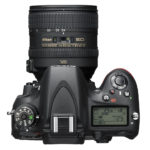 On the top left of the camera are the shooting mode and release mode dials. Both have a dedicated lock button to prevent inadvertent changes to the position of the dials. The shooting mode lock is placed in the centre of the dial, so it is easy to depress the lock button and turn the dial using your index finger and thumb respectively; however, the lock button for the release mode dial is perched on the rear left corner of the camera body. Instinctively I pressed this with my left index finger, but this then makes it rather difficult to rotate the dial, so you need to become accustomed to pressing the lock button with your thumb and using your index finger to turn the dial.
On the top left of the camera are the shooting mode and release mode dials. Both have a dedicated lock button to prevent inadvertent changes to the position of the dials. The shooting mode lock is placed in the centre of the dial, so it is easy to depress the lock button and turn the dial using your index finger and thumb respectively; however, the lock button for the release mode dial is perched on the rear left corner of the camera body. Instinctively I pressed this with my left index finger, but this then makes it rather difficult to rotate the dial, so you need to become accustomed to pressing the lock button with your thumb and using your index finger to turn the dial.
By incorporating the AF-area mode selection in the AF mode button on the front of the D600 there is space for the new style Live View selector switch, as seen on the D800 and D4, for selecting Live View for shooting stills, or video, which is located to the right of the rear monitor screen just below the multi selector button used for selecting the AF point.
Four of the five buttons on the left side of the monitor screen have dual functionality, the exception being the menu button. There is now a dedicated button for accessing the Retouch menu, which also provides direct access to the Picture Control menu item in the Shooting menu. Below this is the image protect button that doubles as the white balance button, while the zoom-in button for image review is also used to set image quality and size in combination with the command dials, and the zoom-out button can be used to select the ISO setting. There is no separate AF-ON button, although the AF-ON roe can be assigned to the AE-L/AF-L button that is located to the right of the viewfinder eyepiece. Although the layout of the button on the rear panel is largely in keeping with previous models there are some changes and these will prevent intuitive camera handling if you pair the D600 with a second but different camera body.
The D600 lacks a PC sync terminal for flash, but the Nikon AS-15 adapter can be attached to the accessory show if you need to connect a standard flash sync cable. There is no 10-pin remote accessory terminal either, although there is a terminal located under one of the rubber covers on the left end of the camera body that supports connection of the MC-DC2 remote release cable and the GP-1 GPS device, as well as the new WU-1b mobile adapter that supports wireless connectivity to a smart phone, or tablet device, which enables the D600 to be controlled remotely, for the user to review images on a larger screen, or disseminate images away from the camera, for example to a social media web site. The WU-1b is already compatible with the Android OS and I understand iOS support will be available by the end of September 2012. Other external connection ports include a 3.5mm jack for an external stereo microphone and 3.5mm jack for connecting headphones, a USB 2.0 interface, and an HDMI interface.
Other features of the D600 that can help to enhance operational efficiency of the camera include, a broad range of in-camera editing tools, including D-Lighting, NEF (Raw) processing, filter effects, distortion control, perspective control, and basic editing of video clips to set the start and end points. There is the same High Dynamic Range (HDR) feature found in the D800 that records one overexposed and one underexposed frame in a single shutter release, with a difference in exposure level of up to 3EV. The D600 has a dual-axis virtual horizon display that can be shown on the rear monitor display to indicate the camera’s position in relation to a left/right roll from the horizontal, or the pitch of the camera (forward or backward rotation from the horizontal). The camera can also display its orientation in a single axis (left/right roll) in the viewfinder by assigning this option to one of the configurable external buttons, such as the Function button.
Battery & Power Options
 The D600 body can accommodate a single Nikon EN-EL15 (7.0V 1900 mAh) rechargeable Lithium-ion battery, the same battery used by the D800 models and the D7000. Based on CIPA Standards testing it will power the camera for 900 stills pictures, or approximately 60-minutes of video recording. The camera is compatible with the Nikon EH-5b/EP-5b mains AC power (240 -110 V) adapter and power connector accessories.
The D600 body can accommodate a single Nikon EN-EL15 (7.0V 1900 mAh) rechargeable Lithium-ion battery, the same battery used by the D800 models and the D7000. Based on CIPA Standards testing it will power the camera for 900 stills pictures, or approximately 60-minutes of video recording. The camera is compatible with the Nikon EH-5b/EP-5b mains AC power (240 -110 V) adapter and power connector accessories.
To increase shooting capacity there is the optional MB-D14 Battery Pack that accept either a single EN-EL-15 rechargeable Lithium-ion battery, or alternatively eight AA / LR-6 sized alkaline, NiMH, or lithium batteries. As mentioned above the MB-D14 provides a duplicate pair of command dials, a vertical shutter release button, together with an AF point selector button and an AE-L/AF-L button. It is constructed around a magnesium alloy shell and is sealed to the same standards as the D600 body.
Summary
The D600 is packed with plenty of features and combined with is small size, low weight, and all the benefits of an FX-format sensor that has a high resolution it makes for a very appealing camera. If the sample images and very impressive video shot by Florian Schultz, which were shown at the official press launch in London are any indication, the D600 has enormous potential to become a very successful for Nikon. Of course we will not know for sure how the characteristics of the D600 sensor and in-camera processing will convert into overall image quality until there has been the opportunity to use the camera in real world conditions, but we should not have to wait for very long, as Nikon expect the camera to start shipping to dealers from Tuesday 18th September 2012.
Price & Availability:
D600 body only:
RRP: £1,955.99
Note: At the time of its introduction, during July 2008, the D700 went on sale at an RRP body only price of: £1999.99
MB-D14 Battery Pack:
RRP: £249.99
WU-1b Mobile Adapter:
RRP: £64.99
Sales start date: 18th September 2012


